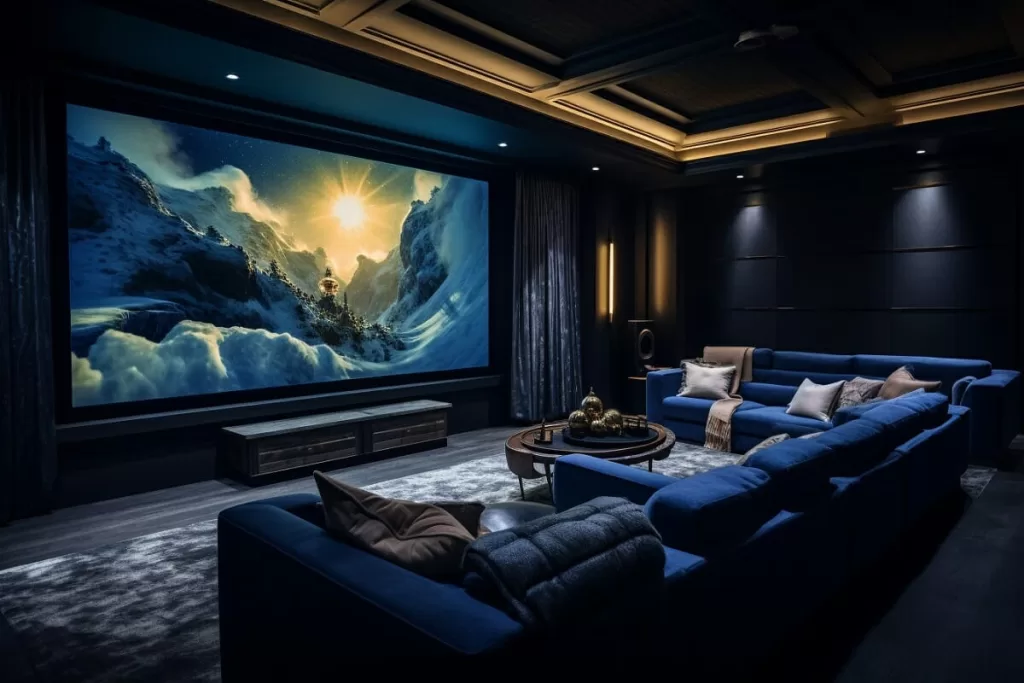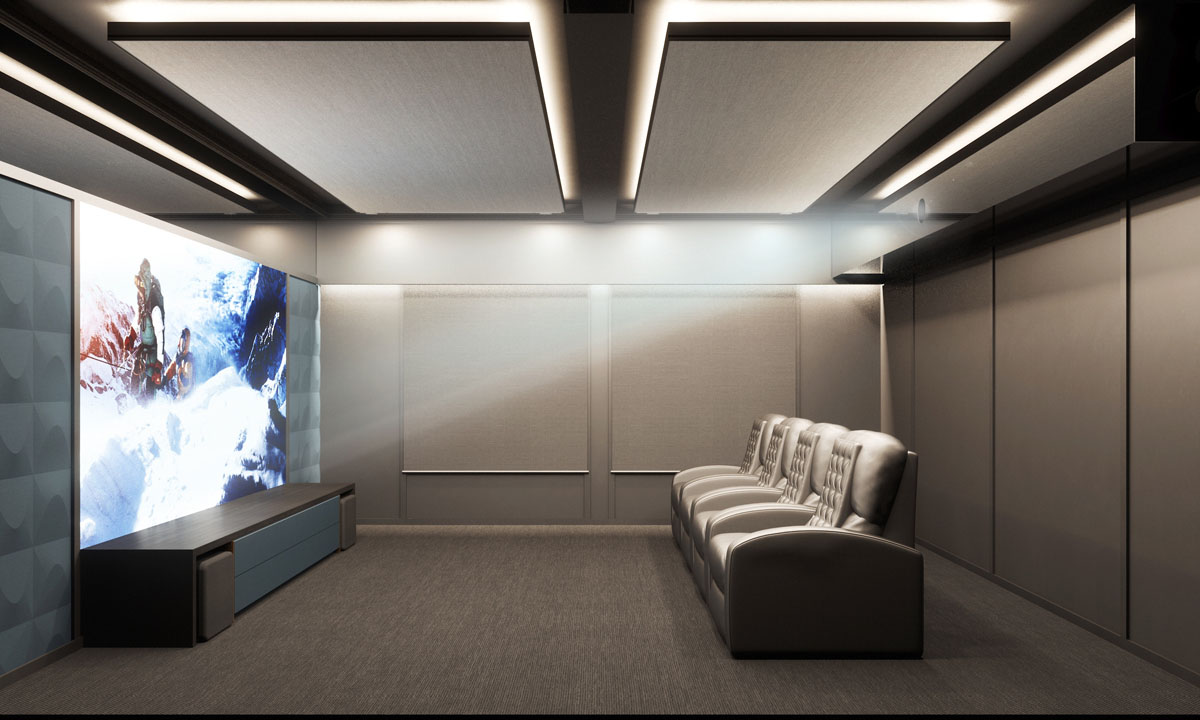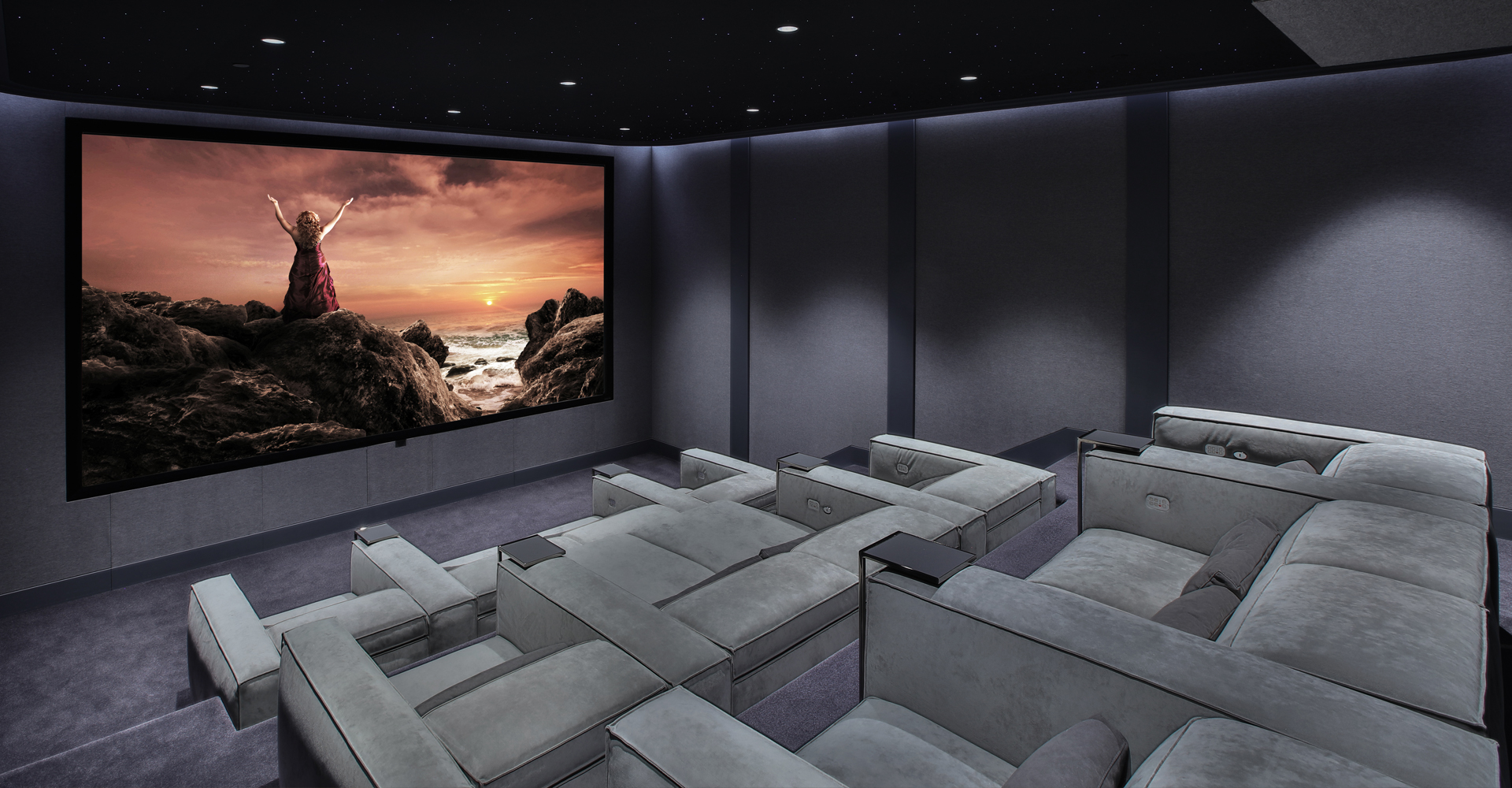Professional Tampa Home Theater Installation for a Seamless Experience
Wiki Article
Home Theater 101: Every Little Thing You Need to Know for a Motion Picture Experience at Home
Creating a home movie theater that equals the motion picture experience of a business theater involves careful factor to consider of multiple components, including display option, sound systems, and area format. Each aspect plays an essential function in attaining the wanted ambiance and performance. Whether you are contemplating the ideal screen size or the details of border sound, comprehending these fundamentals is vital. As we explore these essential components, it comes to be obvious that the choices made can significantly influence your general watching experience, leaving one to ponder how these choices will certainly shape your personal cinema.Selecting the Right Screen
When establishing a home cinema, picking the ideal display can make or damage the viewing experience - home theater installation tampa. The screen functions as the centerpiece of your arrangement, affecting image quality, watching angles, and overall visual. Key aspects to think about consist of screen size, kind, and resolutionFirst, identify the appropriate screen dimension based on your room measurements and seating range. Next, pick in between various display types, such as fixed-frame, motorized, or retractable displays, each offering distinct benefits.
Resolution is one more essential element. For a really immersive experience, consider a screen made for 4K or even 8K web content, guaranteeing intensity and quality. In addition, consider the screen's gain, which impacts brightness and contrast; a higher gain can enhance illumination in well-lit areas, while a lower gain may be a lot more ideal for darker settings.
Picking Audio Equipment
Audio equipment is an important component of any home cinema system, dramatically enhancing the total watching experience. The option of audio equipment can identify the depth, clearness, and immersion of sound, essential for developing a motion picture atmosphere.When selecting audio equipment, consider a surround audio system, which commonly consists of a receiver, numerous audio speakers, and a subwoofer. A 5.1 or 7.1 channel system is advised, where the first number stands for the audio speakers and the second the subwoofer, supplying an immersive soundscape. The receiver is the heart of the system, handling sound and video signals, and must sustain contemporary styles like Dolby Atmos for an enhanced spatial experience.
Quality audio speakers are necessary; try to find designs that offer a well balanced audio account with great bass feedback. Floor-standing speakers can generate richer noise, while bookshelf options conserve area. Furthermore, consider cordless options for ease of installation, although wired systems usually supply remarkable efficiency.

Optimum Seating Arrangements
Developing an optimal home theater experience pivots dramatically on optimal seating setups. The setup of seats plays a vital function in both convenience and viewing quality, straight affecting the total motion picture experience.First, think about the display dimension and viewing distance. A typical guideline is to position seats at a distance roughly 1.5 to 2.5 times the angled dimension home theater tampa of the display. This ensures an immersive experience without straining the eyes.
Next, elevation is important. The back rows ought to be higher than the front to stay clear of blockages if your seats is in a tiered format. For flat seating, guarantee that the front row is not too near the screen, and that every person has a clear view.
Additionally, think about the setup in regards to social characteristics. Team seats can boost the public experience, while private seats may be favored for individual viewing.

Last but not least, prioritize comfort with ergonomic seating that sustains extended watching periods. Including reclining chairs or supported seats can considerably enhance the experience, making the home theater a preferred destination for both home entertainment and relaxation.
Lighting and Setting
Effective illumination and setting are vital components of a well-designed home movie theater, as they considerably affect the viewing experience. The appropriate lights can improve the cinematic feeling, while bad selections can interfere with it. For optimal outcomes, consider a split lights method that includes ambient, task, and accent illumination.Ambient illumination supplies general lighting, making sure that the area is not entirely dark, which can strain the eyes. Dimmer buttons are extremely suggested, enabling changes based upon the web content being seen. Task illumination, such as wall surface sconces or floor lamps, provides functional lighting for tasks like analysis or navigating the room without disrupting the general environment.
Accent lights can be utilized to highlight building features or develop prime focus, adding depth and passion to the space. LED strip lights behind screens or along shelves can give a refined radiance that improves the visual experience without frustrating the customer.

Wiring and Installation Tips
A well-planned wiring configuration is vital for accomplishing optimal efficiency in your home movie theater system. Proper circuitry not just makes certain high-quality sound and video signals but also boosts the total visual of your room. Begin by drawing up your design, identifying where each element will be placed, including your screen, audio speakers, and receiver.When selecting cords, prioritize high-quality, properly gauged wiring to decrease signal loss. HDMI cables ought to be made use of for video links, while audio speaker cord ought to match the specs of your audio speakers and amplifier. Choose for in-wall rated wires to abide with safety and security requirements and maintain a clean appearance.

Final Thought
In recap, creating a phenomenal home cinema experience requires cautious consideration of numerous components, consisting of screen selection, audio equipment, seating setups, illumination, and circuitry. By prioritizing these factors, a motion picture environment can be successfully reproduced, enabling for immersive checking out experiences that match conventional cinema setups.Producing a home theater that matches the motion picture experience of an industrial theater entails cautious consideration of multiple elements, including display option, sound systems, and room design.When establishing up a home theater, selecting the appropriate display can make or break the checking out experience. Next off, select between numerous display kinds, such as fixed-frame, mechanized, or retractable screens, each offering unique benefits. For an absolutely immersive experience, think about a screen developed for 4K or also 8K material, ensuring sharpness and clarity.In recap, creating a remarkable home cinema experience needs mindful factor to consider of numerous aspects, including display choice, audio equipment, seating arrangements, lights, and electrical wiring.
Report this wiki page